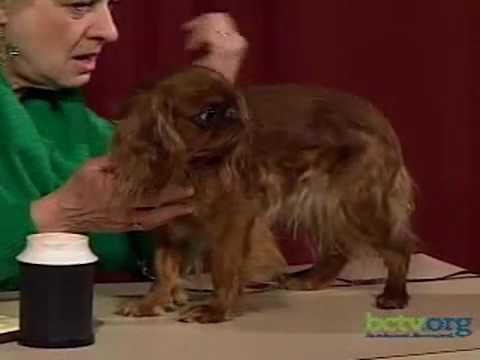The English Toy Spaniel is a compact, affectionate lap companion with royal roots dating to King Charles II. At about 9–10 inches tall and 8–14 pounds, it shows a domed head, short upturned nose, and large dark eyes that give a gentle expression.
The coat is long and silky and appears in four classic colorways: Blenheim, Prince Charles (tricolor), Ruby, and the black and tan King Charles pattern. It adapts well to apartment life, preferring short walks and playful time before long cuddle sessions.
Routine grooming—regular brushing, occasional trimming of ears and feathering, and gentle wipes of facial folds—helps prevent mats and irritation. Owners should watch for breathing noise, eye changes, or ear odor, and follow up with vet care when needed.
This introduction previews a guide that covers history, look-alikes, temperament, health checks, and step-by-step daily care to help owners enjoy a long, happy life with this beloved companion.
Key Takeaways
- This compact companion has royal history and a calm, affectionate personality.
- Recognizable features include a domed head, short nose, and expressive eyes.
- Coat colors include Blenheim, tricolor, Ruby, and black and tan King Charles.
- Simple grooming and face care prevent mats and skin irritation.
- Watch for breathing or eye changes and keep routine veterinary checkups.
- Modest exercise and consistent feeding suit apartment living and steady health.
Meet the toy spaniel dog: history, origins, and why they’re beloved today
Seventeenth-century England set the stage for a beloved lap companion prized by nobles. Court painters and diaries show King Charles II rarely separated from his small companions, which helped shape their gentle manners and compact look.
From royal laps to modern homes
These english toy spaniels evolved as companions, not hunters. Their distinctive domed head and short muzzle reflected court tastes and practical breeding choices of the era.
AKC recognition and U.S. presence
The breed joined the American Kennel Club in 1886, an early entry among toy breeds. Today they remain uncommon in the United States, though enthusiasts often contact the English Toy Spaniel Club of America for reputable breeders and care guidance.
Across Europe, related continental lines influenced later breeds like the Papillon/Phalène. Differences in kennel club naming and standards explain why similar breeds developed divergent appearances and roles over time.
English Toy Spaniels vs. Continental Toy Spaniels and Papillons: tell them apart

Identifying small continental companions often comes down to ear carriage and overall silhouette. A few quick checks make field ID simple for owners and enthusiasts.
American Kennel Club stance and registry differences
The American Kennel Club treats Papillon and the Continental Phalène as one breed that differs only by ear set. European registries like the FCI list them separately. This registry split affects show eligibility and breeding records.
Ears make the difference
Phalène (drop) ears signal the Continental line. Erect, rounded “butterfly” ears identify the Papillon at a glance. Ear carriage is the fastest visual cue for most buyers.
Signature color varieties
English types show a compact, square build, a domed head, and a short nose. They appear in four classic colorways: Blenheim, Prince Charles (tricolor), Ruby, and the elegant black tan King Charles. Coat texture and leg feathering also help complete the ID.
Size, build, and coat: what these spaniels look like at a glance

They combine a plush, square build with long, silky hair that moves with each step. English types are compact and feel sturdy in the lap, while continental varieties look lighter and slightly longer in profile.
Measurements and proportions
English Toy Spaniels typically measure about 9–10 inches tall and weigh 8–14 pounds. Their square outline, domed head, and short upturned muzzle create a compact silhouette that many owners find ideal for apartments.
Coat, feathering, and Continental patterning
The coat on English types is long and silky with feathering on the ears, chest, legs, and tail. This gives a plush, flowing look that shows movement even at rest.
Continental (Phalène) varieties are finer-boned and slightly longer than tall. Their glossy, wavy hair often appears as white with colored patches and a fuller neck frill. Eyes, head shape, and leg feathering help tell the types apart at a glance.
Temperament, personality, and training that fit family life
These little companions thrive on close bonds and gentle attention from their people. They are sweet, calm, and often prefer lap time over high-energy play.
They bond deeply with family and may be reserved around strangers. Early, positive socialization helps them meet guests with confidence and good manners.
Living with kids and other pets
When introduced carefully, english toy spaniels do well with children and other pets. Supervised play and size-aware rules keep interactions safe and pleasant.
Training and house routines
Training responds best to short, upbeat sessions using positive reinforcement. Small treats, warm praise, and consistent schedules for meals and outdoor breaks speed up housetraining.
Exercise and enrichment
Daily needs are modest: short walks, indoor play, and puzzle games meet both body and mind. Nose work and trick practice reduce boredom and ease separation anxiety when a gradual routine is used.
Health conditions and lifespan: eyes, ears, heart, and joints to watch
Knowing common medical concerns helps owners keep a compact companion healthy and comfortable.
Lifespan and general outlook: Lifespan averages about 10–12 years. Proactive care, regular vet exams, and weight control reduce the impact of chronic disease and improve quality of life.
Brachycephalic airway syndrome — signs and heat safety
Heavy snoring, noisy breathing, or quick fatigue during walks are key signs to watch. Heat and humidity make breathing worse, so schedule outings in cool hours and provide good ventilation indoors.
If breathing gets labored or the pet collapses, seek immediate veterinary care; surgery is an option for severe cases.
Mitral valve disease — detection and management
Small companion breeds often develop mitral valve disease. Annual checkups, auscultation and early imaging let a vet start medication and adjust activity before heart failure develops.
Patellar luxation and joint care
Intermittent limping, skipping or a “bunny-hop” gait can signal a slipped kneecap. Maintain ideal weight, use controlled exercise and physical therapy, and discuss surgical repair for severe, persistent cases.
Eyes and ear health
Regular ophthalmic exams catch cataracts and PRA early; cataracts can be surgically corrected while PRA is progressive. Daily tear-stain hygiene and careful face trimming ease irritation.
Long, floppy ears trap moisture and debris. Clean with a vet-approved solution and investigate allergies when infections recur.
Extras to track: Dental disease, glaucoma, entropion and metabolic issues sometimes appear. Brushing teeth, measured food portions, and clear medical records help vets tailor care as the pet ages.
Everyday care essentials: grooming, diet, weight, and routine maintenance
Caring for an English Toy Spaniel combines brief grooming sessions with measured feeding and regular checks. A steady routine keeps the coat healthy and prevents common problems.
Brushing and trimming
Brush the silky coat several times a week, focusing on ears, chest, legs, and feathering to avoid mats. Trim foot hair and ear fringes as needed for tidy edges and easier upkeep.
Skin, face folds, and eyes
Wipe facial folds gently during daily care. Watch for redness, odor, or irritation and call a vet early if problems appear.
“A quick wipe can stop small irritations before they become infections.”
Teeth, nails, and ears
Brush teeth often and schedule professional cleanings. Trim nails regularly to prevent slipping. Ask a veterinarian how often to clean ears, since humid climates raise infection risk.
Diet, bowls, and healthy weight
Feed AAFCO-compliant food matched to life stage. Offer adults two measured meals daily and puppies three to four small meals. Use shallow, wide bowls or slow feeders to reduce gulping.
Keep weight in check with portion control, smart treats, and light daily activity. If recommended, supplements like omega-3s or joint support may help—consult a vet first.
Is a toy spaniel dog the right fit for your home and lifestyle?
Prospective owners should match lifestyle, living space, and daily availability before bringing home a compact companion.
English toy spaniel thrive with regular attention, short walks, and calm family routines. They adapt well to apartments and do best when people can offer cuddle time and gentle play.
Early socialization helps them accept children, other pets, and strangers. Grooming is simple at home with routine brushing, face care, and nail trims.
If long workdays are the norm, plan for sitters or daycare to prevent separation anxiety. Budget for preventive vet care for eyes, ears, heart, and joints.
Contact the English Toy Spaniel Club of America to find reputable breeders and learn more before making a commitment.




